
Vipera is a genus of venomous vipers. It has a very wide range, being found from North Africa to just within the Arctic Circle and from Great Britain to Pacific Asia. The Latin name vīpera is possibly derived from the Latin words vivus and pario, meaning "alive" and "bear" or "bring forth"; likely a reference to the fact that most vipers bear live young. Currently, 21 species are recognized.

Vipera ammodytes is a viper species found in southern Europe, mainly the Balkans, and parts of the Middle East. It is reputed to be the most dangerous of the European vipers due to its large size, long fangs and high venom toxicity. The specific name, ammodytes, is derived from the Greek words ammos, meaning "sand", and dutes, meaning "burrower" or "diver", despite its preference for rocky habitats. Five subspecies are currently recognized, including the nominate subspecies described here.
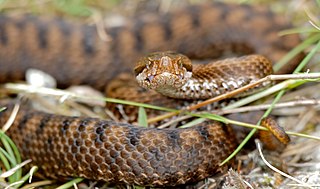
Vipera aspis is a venomous viper species found in southwestern Europe. Its common names include asp, asp viper, European asp, and aspic viper, among others. Bites from this species can be more severe than from the European adder, V. berus; not only can they be very painful, but also about 4% of all untreated bites are fatal. The specific epithet, aspis, is a Greek word that means "viper." Five subspecies are currently recognized, including the nominate subspecies described here.
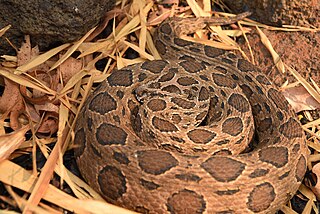
Daboia siamensis is a venomous viper species, which is endemic to parts of Southeast Asia, southern China and Taiwan. It was formerly considered to be a subspecies of Daboia russelii, but was elevated to species status in 2007.

Cerastes vipera, common names Sahara sand viper and Avicenna viper, is a venomous viper species endemic to the deserts of North Africa and the Sinai Peninsula. No subspecies are currently recognized.

Macrovipera schweizeri is a species of venomous snake in the family Viperidae. The species is endemic to the Cyclades Archipelago in the Aegean sea. No subspecies are currently recognized.

Macrovipera lebetina obtusa is a venomous viper subspecies endemic to Asia, from central Turkey to northern Pakistan (Kashmir).
Vipera ammodytes meridionalis is a venomous viper subspecies endemic to Greece and Turkish Thrace.
Vipera ammodytes montandoni is a venomous viper subspecies endemic to Bulgaria and southern Romania.
Vipera aspis atra is a venomous viper subspecies endemic to France, Switzerland and Italy.

Vipera aspis francisciredi is a venomous viper subspecies endemic to northern and central Italy and adjacent Croatia, Slovenia, and Switzerland.
Vipera aspis zinnikeri is a venomous viper subspecies endemic to the Pyrenees region of Spain and France.
Vipera berus sachalinensis is a venomous viper subspecies endemic to Asia.
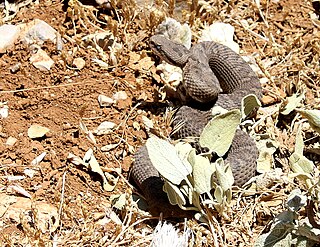
The Lebanon viper is a venomous viper species found in Lebanon, Jordan, Israel, and Syria. No subspecies are currently recognized.
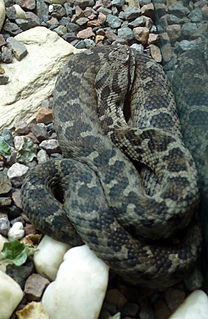
The Mount Bulgar viper is a venomous viper species endemic to the mountains of southern Turkey. No subspecies are currently recognized.

Montivipera raddei is a species of viper, a venomous snake in the subfamily Viperinae of the family Viperidae. The species is endemic to Armenia, Azerbaijan, Iran, Turkey, and possibly also Iraq. Two subspecies are recognized.
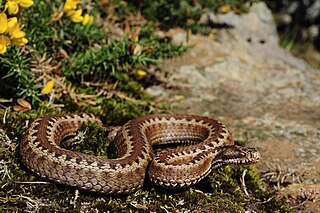
Vipera seoanei is a venomous viper species endemic to extreme southwestern France and the northern regions of Spain and Portugal. Two subspecies are currently recognized, including the nominate race described here.
Vipera seoanei cantabrica is a venomous viper subspecies endemic to the Cantabrian Mountains in Spain.

Vipera ursinii is a venomous viper and a very rare species, that is in danger of extinction. It is found in France, Italy, and Greece. Several subspecies are recognized.












